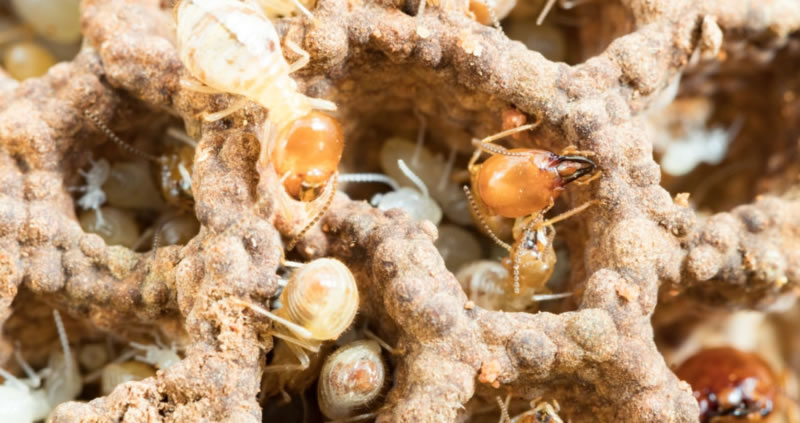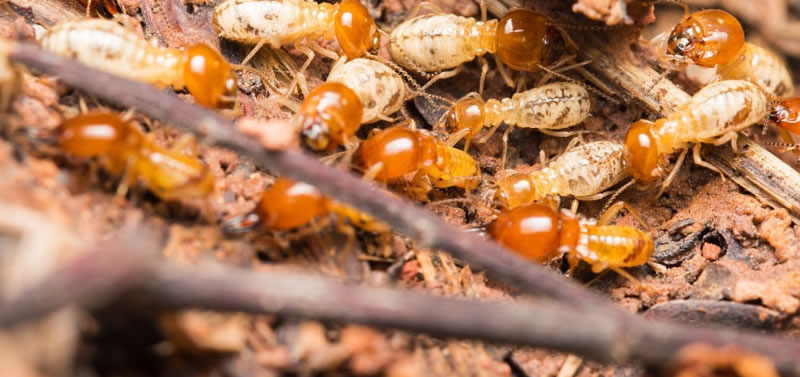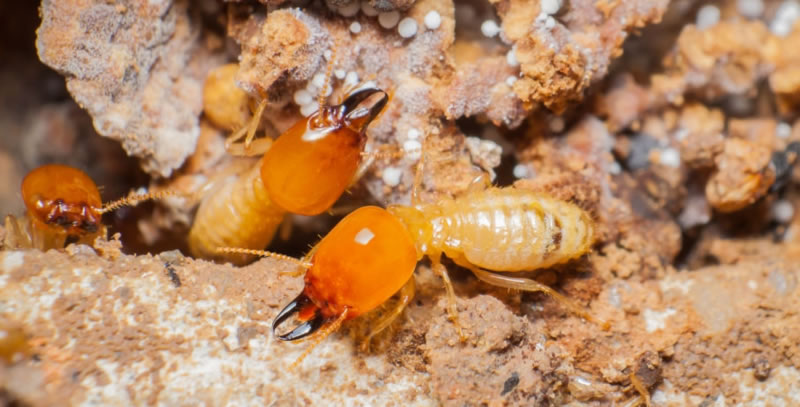What Is The Best Termite Treatment?
There is no single one-size-fits-all answer to this question. There is a range of products and treatments available to suit various situations and conditions. It is important to remember that it’s not just about your geographical location. What works for you might not be a suitable best termite treatment solution for your next-door neighbour. The factors at play include;
- Your soil type
- The slope of the property
- The house’s build
- The type of termites you have on your property
- The feeding grounds available for termites to sustain themselves on
Before we can deduce the best termite treatment option for your property, a general overview of the various treatments will provide insight;
Liquid Soil Treatments Against Termites
Barrier methods create a safe zone around your house. We place a chemical in the soil around the house which deters the termites. In the case of a chemical barrier, we aim to prevent termites from approaching the building but this is not always possible.
Termites are able to tunnel over many barriers or cross it by using trees. The primary purpose of a barrier is to prevent termites from accessing your home. Where they can innovate their way over a barrier, they’re forced to reveal themselves. This enables us to quickly exterminate them. There can be no break in the barrier. Sometimes, this can be impossible. It depends on the house’s build and the obstacles that are around it.
Termite Baiting Stations
Termite baiting stations have a dual purpose. They serve to draw termites away from your home (short term) and they exterminate the colony (long term). There is a science behind finding the best position for the termite baiting station.
When a termite baiting station is set up according to the industry practices, it is very effective. A termite baiting station will first seek to establish whether there are termites on the property. A qualified professional will carry out regular inspections.
If there are termites, we can apply a toxin to the bait. The slow-acting toxin will first spread throughout the colony before it takes effect. Termite baiting stations are not suitable for every property. In some cases, liquid soil treatments are better suited to the environment.
Alongside these treatments, there are also topical sprays to remove the termites you see in your home. This is not a true solution, just a quick-fix.
The Criteria For Choosing The Best Termite Treatment
Once you understand the different treatments, it’s easy to see why a certain approach may be perfect for one property but unsuitable for another. This is why an assessment is an important first step. A termite control expert needs to assess the property’s spread. Then he has to decide how to target the existing termite colonies. Here are the main factors that determine the best termite treatment for your property;
How Is Your Home Constructed?
Throughout Australia, there are two main ways in which builders contruct houses. Firstly, there are those built on a concrete slab. This means the building rests against the floor. Sub-floor houses are generally built on piers or stilts.
Both houses are good candidates for liquid soil termite treatment. That said, it can be more expensive for those with a subfloor because that needs treatment too. A slab house experiences termite infestations as a result of minor building flaws (they’re inevitable, sometimes). In that case, a termite baiting station might be the most beneficial option.
The Building’s Imperfections
Construction flaws happen. It’s not always due to human error, it can be environmental. The problem is that these flaws often create an entry point for termites. It is not possible, in these cases, to create an uninterrupted barrier.
This is true for both newly constructed houses and older buildings. Examples of such imperfections include concrete slabs not quite hugging in corners. When we apply a termite barrier treatment, the termites still source small entry points into the house.
They’re adept at finding the tiniest crevices and imperfections humans would otherwise never notice. Alongside flaws, a house with paves and concrete walkways are also often unsuitable for barrier treatments.
This is because we have to treat the pavers and the walkways too – which often means gutting them. It’s labour-intensive, expensive, and can ruin your aesthetic. In these cases, a house will benefit from a baiting station far better.
Soil Type
Your soil type plays an important role in choosing the best termite treatment. Liquid soil treatments require a soil type that is well-draining. This enables the chemical to spread as it should. Loamy, sandy soil is best.
A rich soil that contains clay and rock is not suitable It will leave gaps where the chemical can’t penetrate. This leaves a break in the seal, making you vulnerable to termites. In these cases, we can still apply a liquid soil treatment. However, we first have to replace the existing soil with a loamy version. This additional labour cost can mean that a baiting station is the best choice.
The Slope Of The Property
Houses built on a steep slope are almost always better off with a termite baiting system. This is especially true for those who live in areas that enjoy more frequent rain. With gravity at play, the soil treatments often seep down the hill. This is especially problematic during rainy periods. The washed away chemicals result in a break in the termiticide seal. It will also result in more top-ups which adds to the costs.
Which Termite Treatment Is Best For You?
The termite treatment that is best suited to your property is the one that doesn’t interfere with your life. It should protect your home from damage and alert you to the presence of termites by forcing them to reveal themselves. All treatments are safe for pets and families. A termite control professional uses the latest innovations to keep your property protected.



